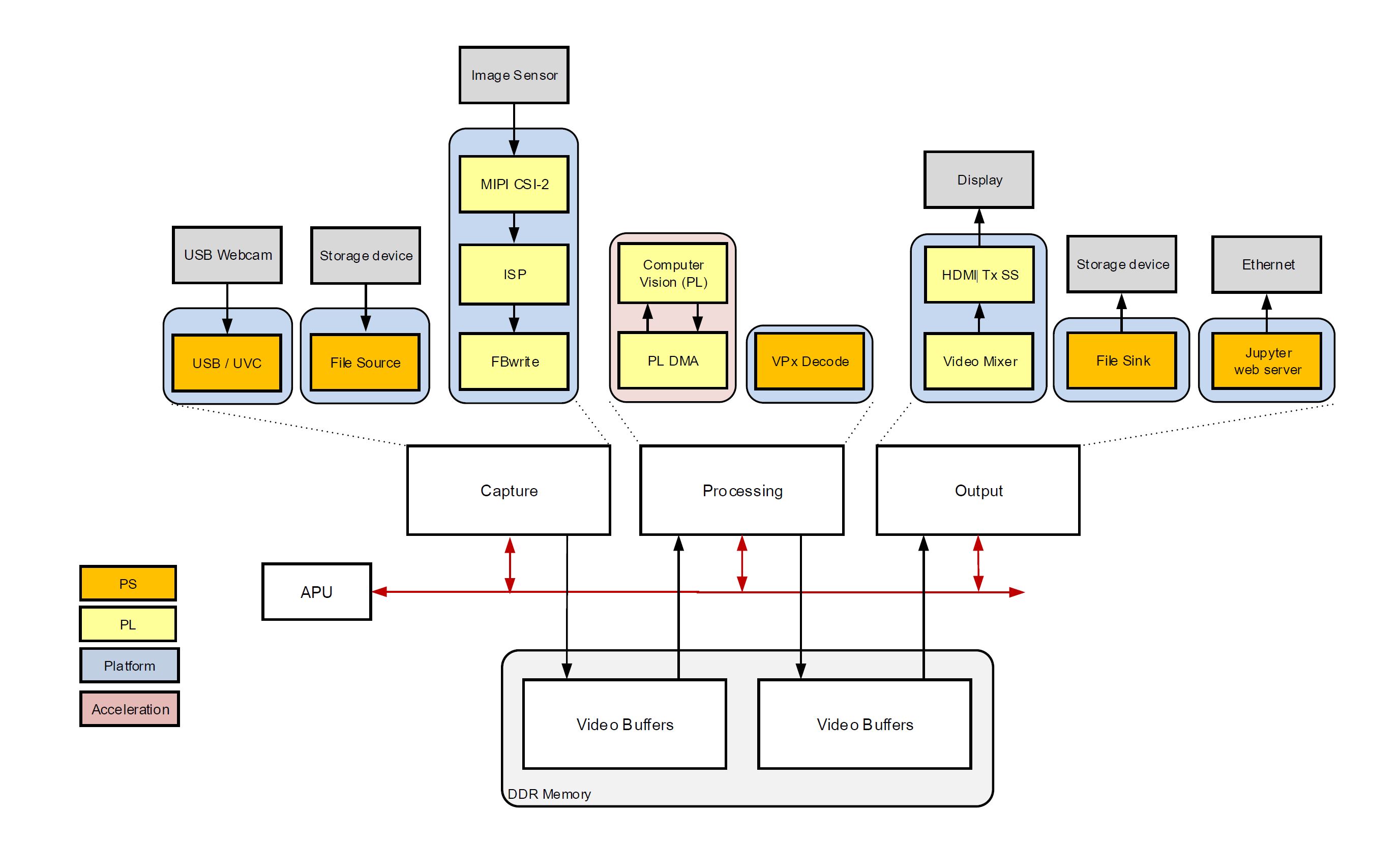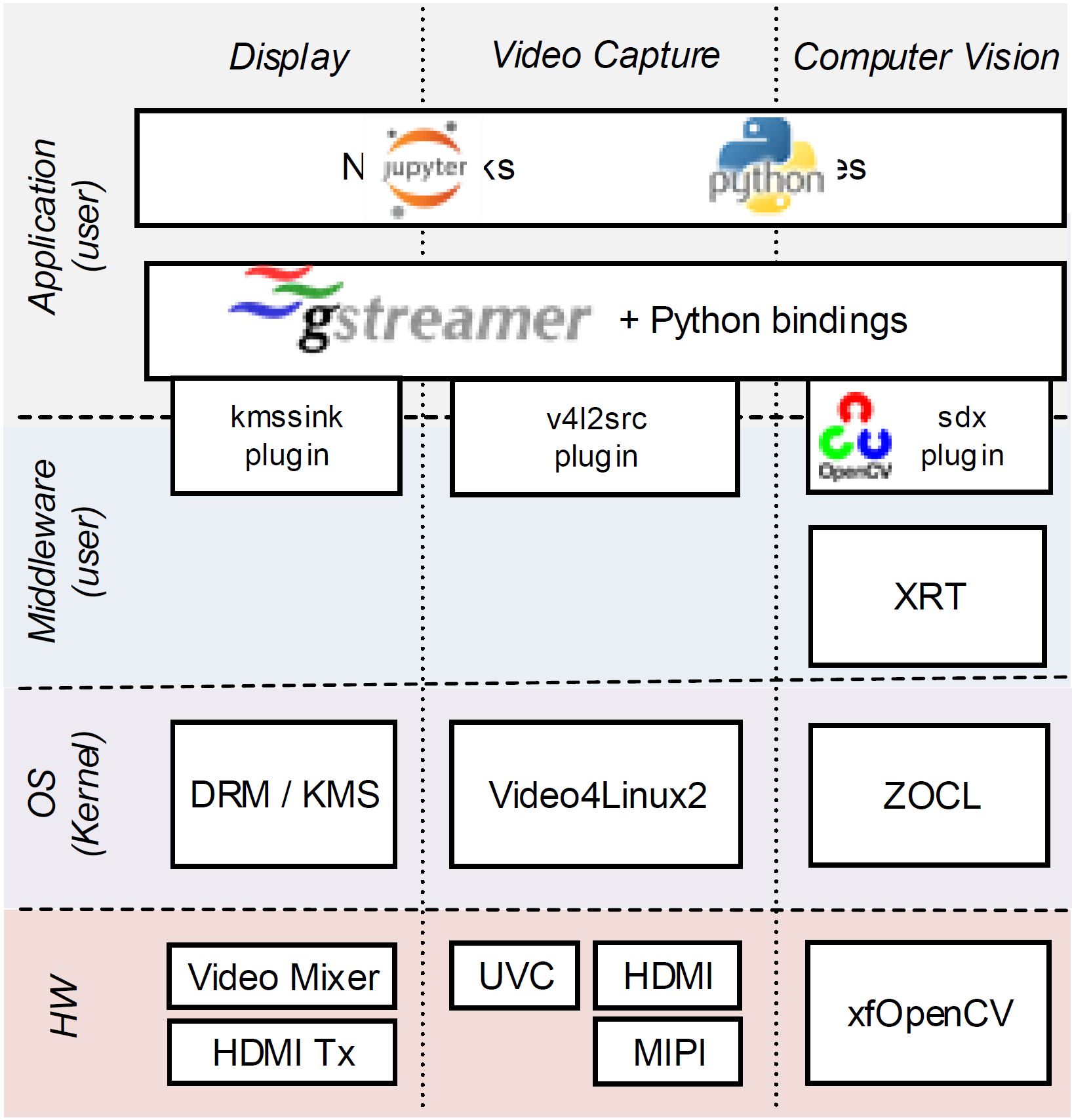2. Introduction¶
The Versal VMK180 TRD consists of a series of platforms, accelerators and Jupyter notebooks to demonstrate various aspects of the design. A platform is a Vivado design with a pre-instantiated set of I/O interfaces and a corresponding PetaLinux BSP and image that includes the required kernel drivers and user-space libraries to exercise those interfaces. Accelerators are mapped to FPGA logic resources and stitched into the platform using the Vitis toolchain. The reference design currently supports the VMK180 evaluation board.
2.1. Platform¶
The following is a list of supported platforms including key I/O interfaces:
Sources:
USB webcam capture pipeline
File source
MIPI CSI-2 image sensor capture pipeline via FMC daughter card
Processing:
VP9 decode and demux
2D Filter (PL)
Sinks:
HDMI Tx + video mixer display pipeline
Application sink into jupyter notebook display

2.2. Software Stack¶
The main software frameworks used in this reference design are:
Jupyter notebooks for top-level application control and visualization
GStreamer multimedia framework and plugins for video pipeline creation
V4L2 kernel subsystem and drivers for video capture devices
Xilinx run-time (XRT) and Xilinx OpenCL for acceleration kernels
DRM/KMS kernel subsystem and drivers for display devices

2.3. Design File Hierarchy¶
The reference design zip file has the following contents:
Documentation (html webpages)
Petalinux Board Support Package (BSP)
Pre-built SD card image
Vivado hardware design project
Vitis platform
Vitis accelerator projects
README file
Design sources zip file
Licenses zip file
The design file hierarchy is shown below:
2.4. Licenses¶
The design includes files licensed by Xilinx and third parties under the terms of the GNU General Public License, GNU Lesser General Public License, BSD License, MIT License, and other licenses. The design directory includes two zip file named sources.zip and license.zip containing the complete set of design source files and licenses extracted from the design source files respectively. You are solely responsible for checking any files you use for notices and licenses and for complying with any terms applicable to your use of the design and any third party files supplied with the design.